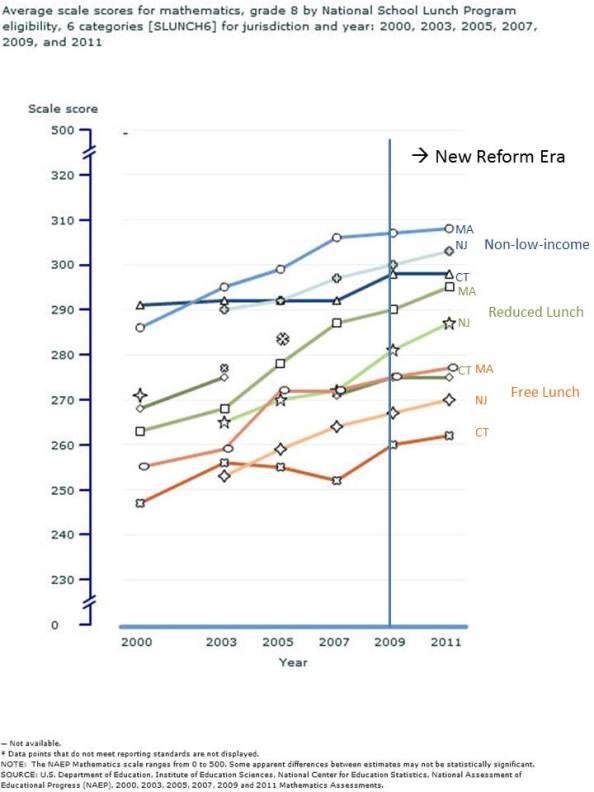Follow up on Reformy Logic in Connecticut
A few days ago, I responded to an utterly silly CT Ed Reform op-ed which argued that poverty doesn’t really matter so much, nor does funding (by omission), and that Massachusetts and New Jersey do better than Connecticut on behalf low income kids because they’ve adopted accountability and teacher evaluation reforms in the past few years. Thus, the answer is for Connecticut to follow suit by adopting SB 24 in its original form. To be clear, NJ has absolutely not adopted anything like SB 24. Here’s a key section of that op-ed:
We think folks would be hard-pressed to argue that low-income students right over the border in Massachusetts or New Jersey face very different circumstances at home than the low-income students in Connecticut. So, what actions have our neighboring states taken to address their achievement gaps that Connecticut hasn’t? Put bluntly, they have adopted education reform policies very similar to the ones proposed in Governor Malloy’s original education reform bill. They have adopted or implemented policies that evaluate teachers on the basis of student performance, that rank schools and districts within a tiered intervention framework, and that provide the Commissioner with the authority to intervene in the lowest performing schools and districts.
In my previous post, I already pointed out a few simple realities… like the fact that both Massachusetts and New Jersey have systematically tackled school funding equity over time, where Connecticut has not. I also suggested that it might be rather foolish to argue that policies considered and/or adopted but not even really implemented yet were the cause of improvements to New Jersey and Massachusetts low income student progress.
So, here’s just one more graph to drive home that point:
http://nces.ed.gov/nationsreportcard/naepdata/dataset.aspx
Yes – Mass and NJ do better than CT, across all student groups, including lower income students. And yes, Mass and NJ have shown higher rates of growth in student outcomes, across all student groups. And you know what, much if not most of that growth has occurred prior to considering, piloting and partially implementing new policies.
So… to put it really simply… it’s pretty darn unlikely that Mass and NJ do better than CT because of recent policy developments.
Further, across all three states, poverty continues to matter.
Children who do not qualify for either free or reduced lunch outperform those who do.
Children who qualify for reduced lunch (185% poverty income level) outperform those who qualify for free lunch (130% poverty income level).
Notably, children qualifying for free lunch in Massachusetts have surpassed those qualified for reduced lunch in CT and those qualified for free lunch in NJ are catching up with those qualified for reduced lunch in CT.
In fact, gaps in the other two states remain relatively large as well because of the growth in outcomes of higher income students which has largely paralleled the growth among lower income students.
This blog post has been shared by permission from the author.
Readers wishing to comment on the content are encouraged to do so via the link to the original post.
Find the original post here:
The views expressed by the blogger are not necessarily those of NEPC.

